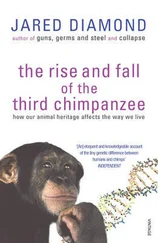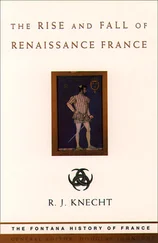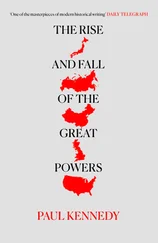Some of the changes of the past decades, good and bad, would be familiar to nineteenth century Americans or to the English of the eighteenth century: the migration of men and women from the countryside to the cities in search of factory work, increased crime and pollution and the rise of ‘robber barons’ or ‘gangster capitalists’. But nowadays the process is much faster and there are many new factors: the rapid spread of television and computers; the growth of consumerism; imports of foreign films and music; the use of drugs such as heroin and Ecstasy; new sexual habits; and much else besides. It is hardly surprising that Asians feel bewildered as well as elated by the changes in their lives as they enter the new millennium.
Nor is it surprising that Asian leaders, especially south-east Asian ones, became more assertive on the international stage as they became wealthier and more powerful in the 1990s. The last European colonies in Asia have been handed back to China (Britain returned Hong Kong in 1997, and Portugal was due to leave Macao at the end of 1999). Lee Kuan Yew, the architect of modern Singapore, and Mahathir of Malaysia both remember the colonial era and attribute their economic success since independence to ‘Asian values’. They argue that Asians work hard and respect their families and communities, in contrast to individualistic, liberal and decadent westerners. Opponents of the ‘Asian values’ school, on the other hand, say the argument is a false one deployed merely to justify authoritarian Asian governments.
I have devoted space to this lively debate because it explains much about what went wrong with south-east Asia’s ‘tiger’ economies, and because its outcome should make it easier to predict the region’s future. One of the few benefits of the financial crisis is that it has prompted Asians to ask questions about their own societies. How much of what is happening is peculiarly ‘Asian’ and how much is merely ‘modern’? Do richer and better educated citizens always demand more democracy and better human rights? What is the point of all this economic growth if our quality of life is getting worse?
Few of the answers are simple, but my conclusion is that industrialization itself has proved to be a much more powerful force for change than any particularly ‘Asian’ values. The industrial revolutions of south-east Asia have remarkably similar effects to those that have gone before in Britain, America and Japan. It could be argued that as a western-educated person, it was inevitable that I would come to this conclusion, just as it was inevitable that Francis Fukuyama of the US would assert the primacy of liberal democracy as a political system in The End of History and the Last Man. I do not believe the languages and cultural traditions of south-east Asia will suddenly disappear, any more than they have in France, Germany or Britain. But I was surprised by how few ordinary Asians – and I asked the question of almost everyone I met while researching this book – subscribed to the theory of ‘Asian values’ as voiced by Asian political leaders and millionaires, and by some western business executives too.
In the aftermath of the financial crisis, south-east Asia will resume the race to catch up with the industrialized world. In the process more and more of its inhabitants will enjoy the benefits of prosperity – better education and healthcare, more material goods and more leisure. But this time around, as they emerge from the humbling experience of the economic crash, they will also be more inclined to tackle the challenges of industrialization: pollution, crime, social disorder, cultural confusion and the urgent need to build effective political institutions. In places as different as Burma, Vietnam and Malaysia, lifestyles are changing rapidly and democrats are already demanding a say in the way their countries are run. The revolution in Indonesia was not the first in the region, and it will not be the last.
Victor Mallet
September 1999
Introduction: A miracle that turned sour
Bangkok in the early 1990s was an extraordinarily energetic city. The peaceful chaos of the streets, where Mercedes-Benzes and BMWs jostled with motorcycles and three-wheel tuktuks for hire, where hawkers cooked noodle soup next to newly-constructed skyscrapers, epitomized the south-east Asian economic boom. When I first set foot in Thailand in 1991, I was impressed not just by the energy but by the easy mixing of new and old, rich and poor, western and Asian. On Ploenchit Road outside my office, a statue of the Buddha, wreathed in incense and garlands of flowers, sat only yards away from a slightly bigger, plastic statue of Colonel Sanders outside a Kentucky Fried Chicken store. On the crowded pavements, foreign backpackers dodged between Thai businessmen talking stock prices into their mobile telephones and disabled women selling lottery tickets to passers-by.
South-east Asia’s dynamism was seductive for a journalist accustomed to other continents. Europe seemed almost lethargic by comparison, and the sense of purpose in Asia’s cities was a refreshing change from the despair in much of Africa and the Middle East. Books about the east Asian economic ‘miracle’ proliferated. It was impossible not to be impressed.
But from the beginning I had doubts – both about the supposedly miraculous nature of what was happening and about how long it could be sustained. I do not claim to be alone in this, for my doubts were sparked and then fuelled by the south-east Asians I met and interviewed throughout the region. Most governments and many business executives were supremely confident, but opposition politicians, academics and others repeatedly warned of the dangers ahead: governments were authoritarian or corrupt or both and would be challenged by their subjects; many Asian businesses were successful not because they were well managed but because they were in league with the same corrupt governments; the environment was being destroyed; and the societies and cultures that seemed so stable were actually in the throes of an enormous upheaval. I confess that my scepticism about the ‘miracle’ soon began to waver in the face of accusations that I and some of my journalistic colleagues were too pessimistic and were mistakenly viewing events through ‘western’ eyes. Several more years of rapid economic growth made our doubts seem even more unreasonable.
Then came the financial crash of 1997. This book was conceived in 1996, so neither the region-wide economic crisis nor the overthrow of President Suharto in Indonesia came as a shock to me or to those Asians who had long advocated political and economic reform. But these events – particularly the abrupt end of the economic boom – did come as a nasty surprise to many south-east Asians and foreign investors. They had assumed that rapid economic growth would continue indefinitely, although they argued about the precise rate of expansion. In the mid-1990s, if you asked anyone in a southeast Asian city a casual question about how things were going, it was surprising how often the reply was a cheerful ‘7.6 per cent’, ‘9 per cent’ or some similarly precise number. Europeans or Americans usually know if their economy is doing well or badly, but most would struggle to remember a recent estimate for the growth of their gross domestic product. For Malaysians, Thais and Singaporeans, however, economic expansion had become an obsession.
There were good reasons for this. The rapid economic growth these countries had enjoyed in the previous three decades had a palpable effect on people’s lives, whether they were cabinet ministers or factory workers; an economy growing at 8 per cent a year doubles in size in nine years, and most people have correspondingly more money to spend and save. South-east Asia’s success – one of the great achievements of the second half of the twentieth century – was also a source of pride to politicians and ordinary citizens alike. The ten countries of south-east Asia have been involved in the most rapid industrial revolution in history. For the half a billion people who live there, this means being catapulted out of traditional and largely rural societies into the new world of big cities, factories, offices, cars, telephones and mass entertainment. Much has been written about the economic causes of this ‘miracle’. This book is about its effects on the people of south-east Asia, and about how it went wrong.
Читать дальше












